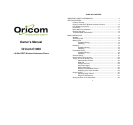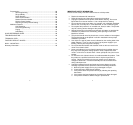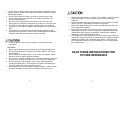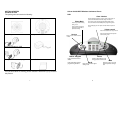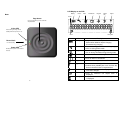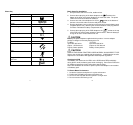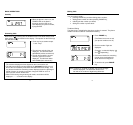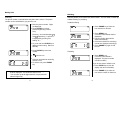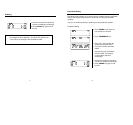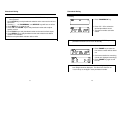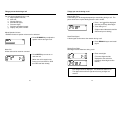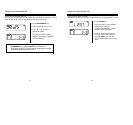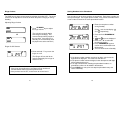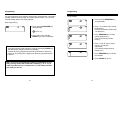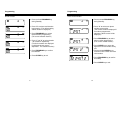
5
•
Do not use your telephone during an electrical storm thunderstorm as it is
possible to get an electric shock. Refer to information contained in Telstra
White pages directory.
•
Do not use this product to report a gas leak in the vicinity of the leak.
• Do not use this product near intensive care medical equipment or by
persons with pacemakers.
• Due to the radio signals between base station and POD, wearers of
hearing aids may experience interference in the form of a humming noise.
• This product can interfere with electrical equipment such as answering
machines, TV sets, radios, computers and microwave ovens if placed too
close.
•
This telephone is not designed for making emergency telephone calls
when the mains power fails. Always have a corded telephone available to
be able to make and receive calls to emergency services.
• To reduce the risk of fire or injury to persons, read and follow these
instructions:
BATTERIES
•
Disconnect the product from wall outlet when replacing the battery pack.
• Use only the battery pack type listed in the Owner’s Manual. Do not use
lithium batteries.
• Do not dispose of the battery pack in a fire, as they can explode. Check
with local codes for battery disposal regulations.
• Do not open or mutilate the battery pack. Released electrolyte is corrosive
and can cause damage to the eyes or skin. It can be toxic if swallowed.
• Avoid contact with rings, bracelets, keys or other metal objects when
handling the battery pack. These objects could short out the batteries or
cause the conductor to overheat resulting in burns.
• Do not attempt to recharge the battery pack by heating it. Sudden release
of battery electrolyte can cause burns or irritation to the eyes or skin.
6
• Observe the proper polarity, or direction, of any battery. Reverse insertion
of the battery pack can cause charging, and can result in leakage or
explosion.
• Remove the battery pack if you do not plan to use the product for several
months at a time. The batteries could leak over that time.
• Discard any “dead” battery packs as soon as possible because they are
likely to leak into the product.
• Do not store this product or the battery pack in a high temperature area.
Battery packs stored in a freezer or refrigerator should be protected from
condensation during storage and defrosting. Battery packs should be
stabilized at room temperature before using.
•
Your battery pack is rechargeable and can be recycled once it outlives its
usefulness. Depending upon your local and state law, it might be illegal to
dispose of this battery into a municipal waste system. Check with your
local solid waste company for more information on your recycling options
for the battery pack.
SAVE THESE INSTRUCTIONS FOR
FUTURE REFERENCE



